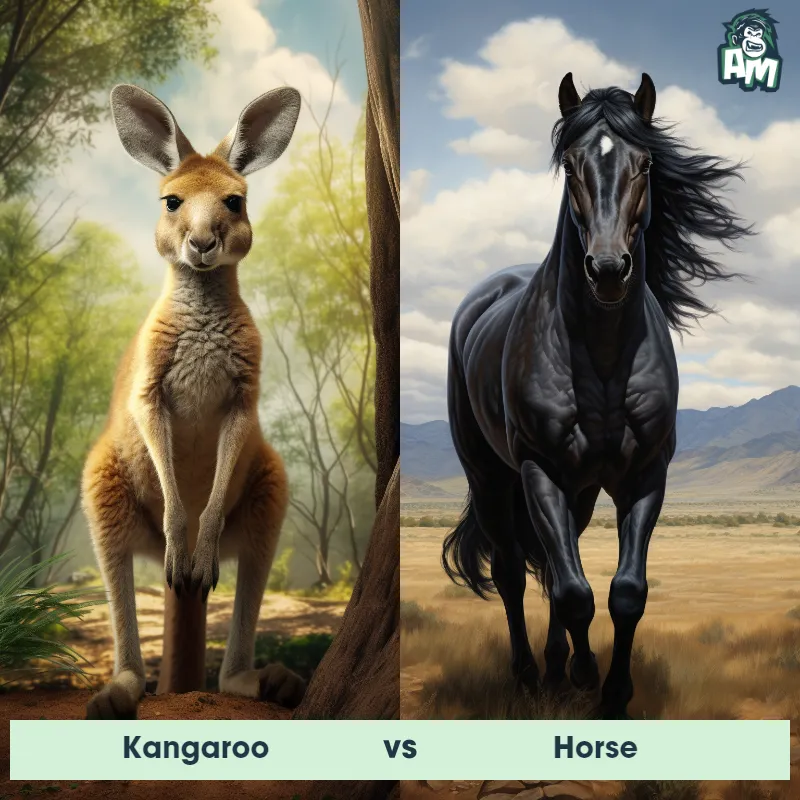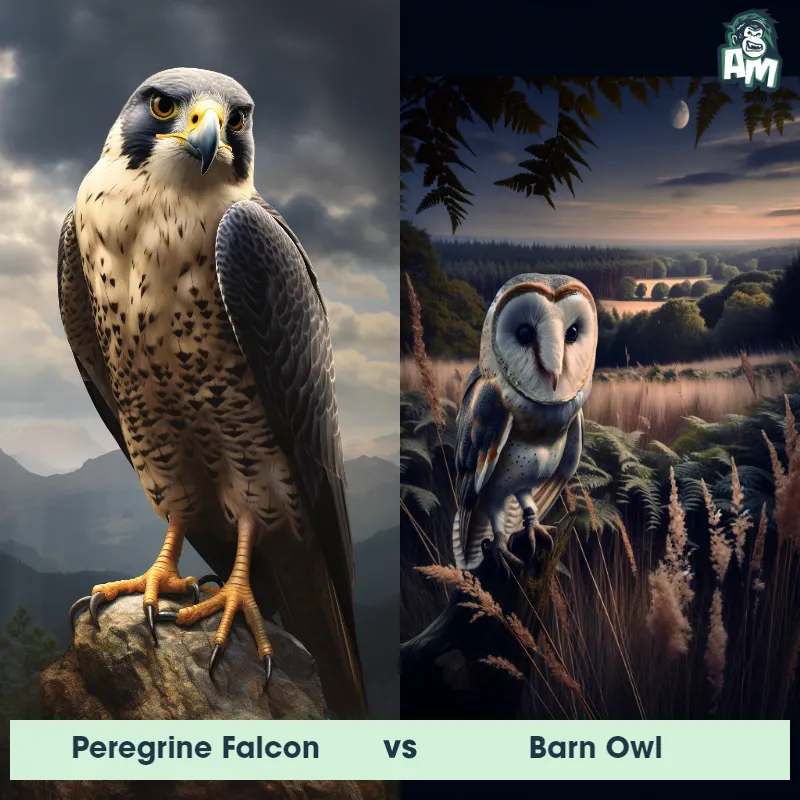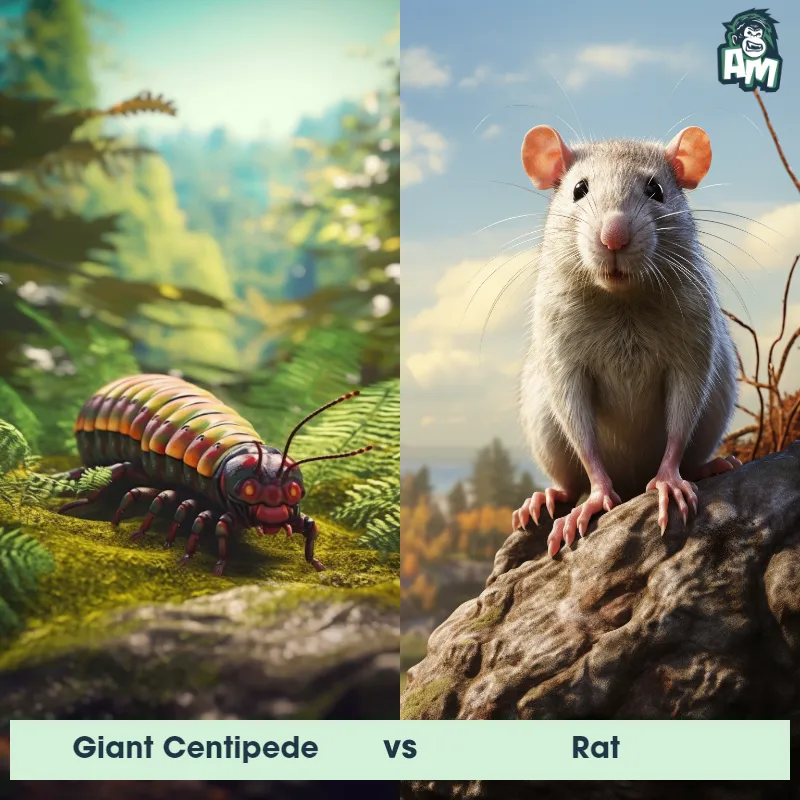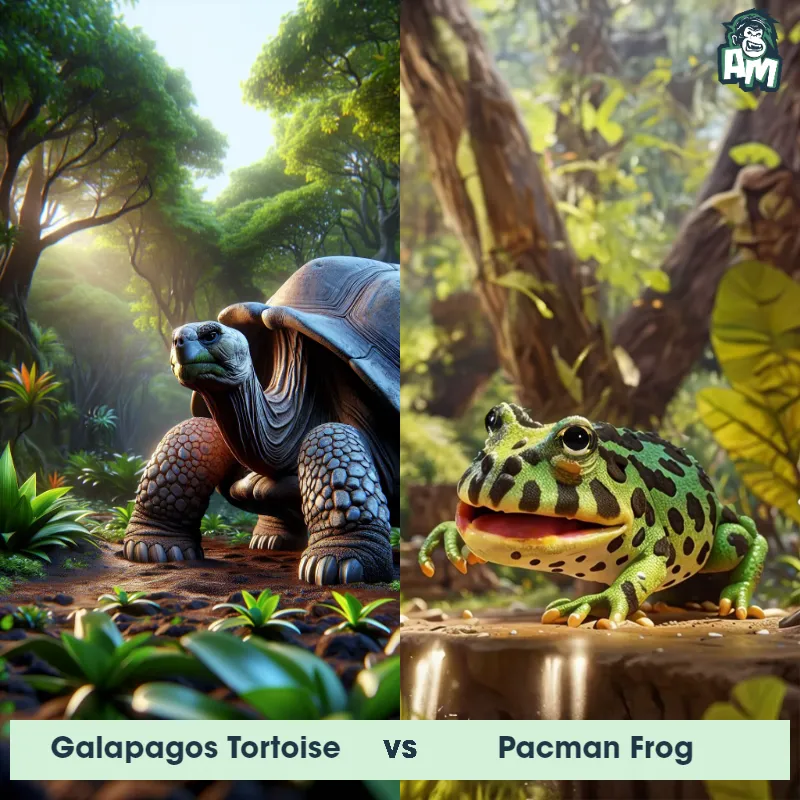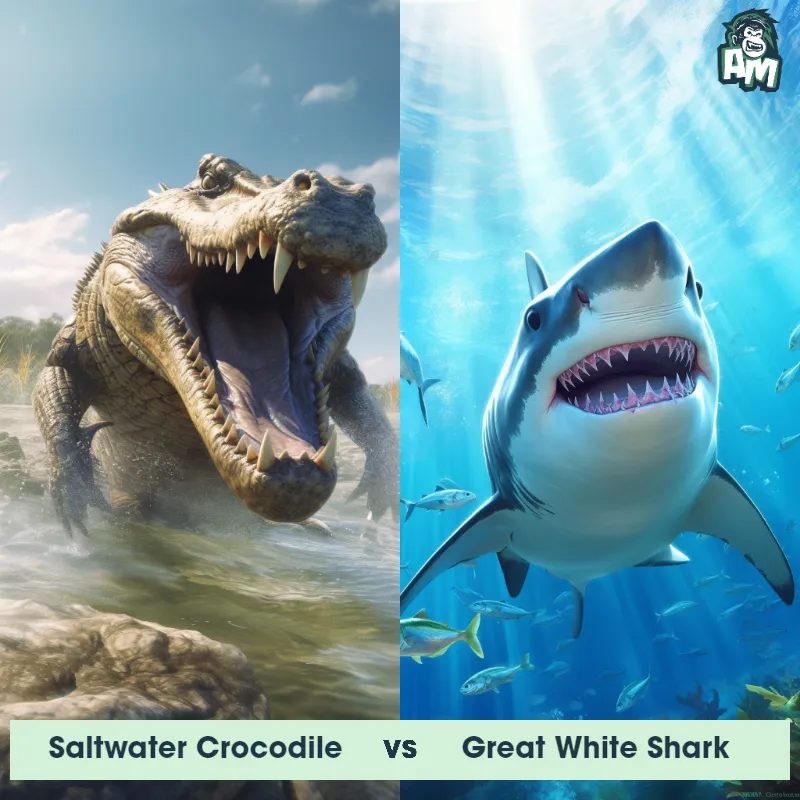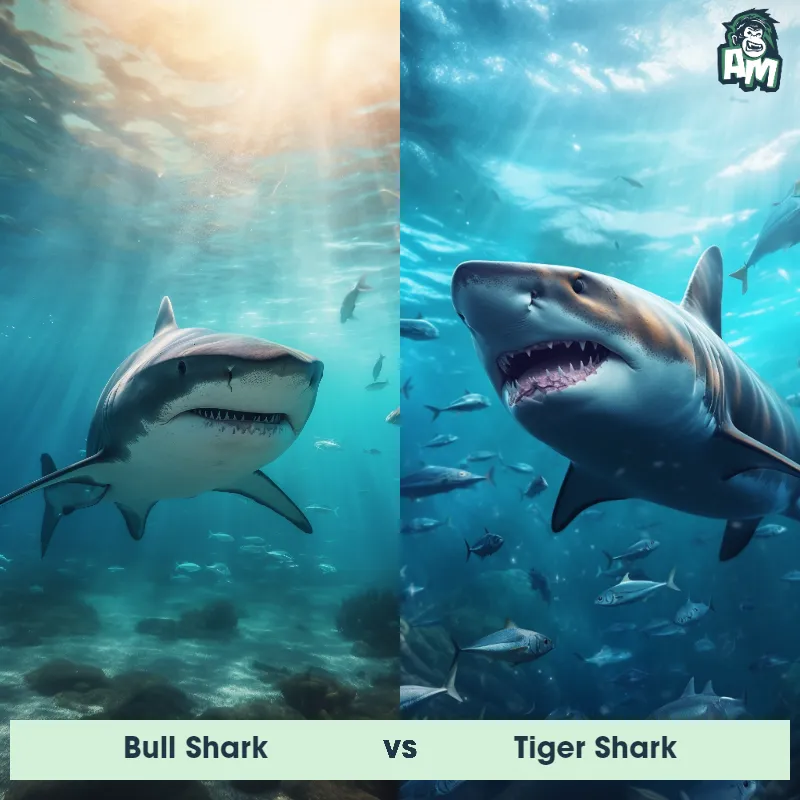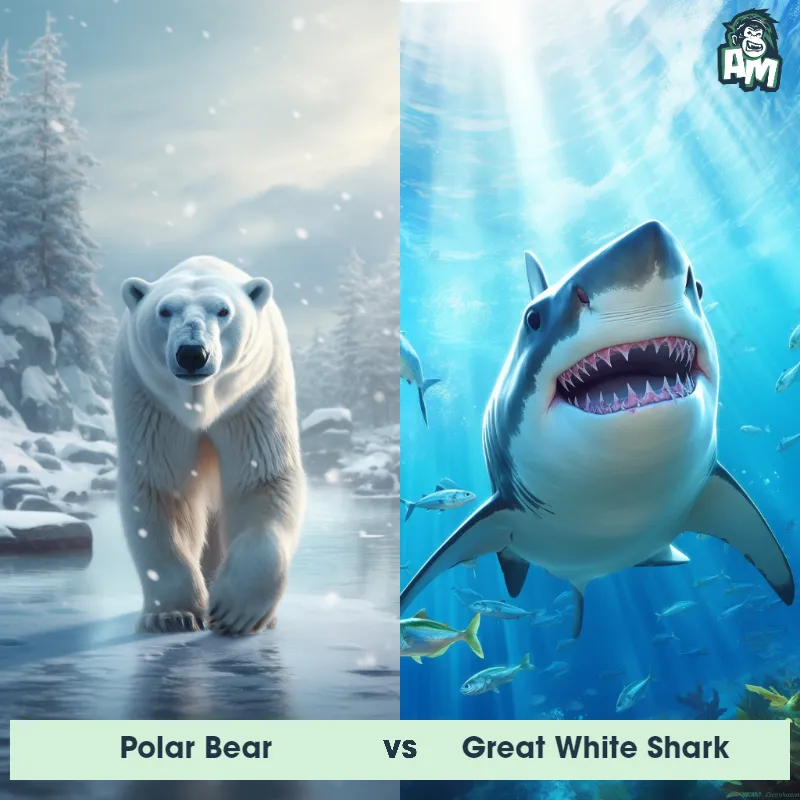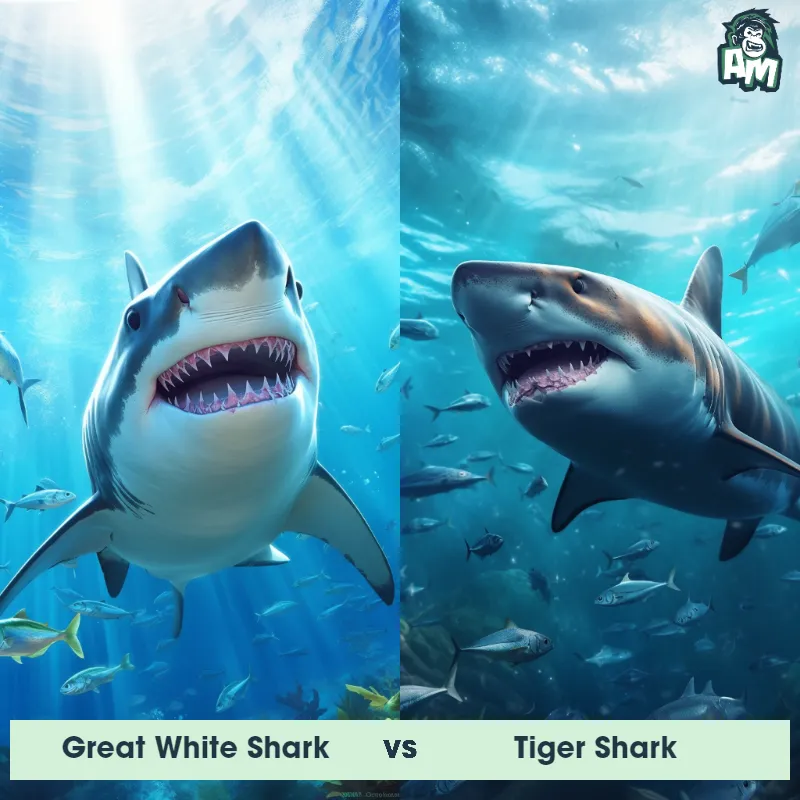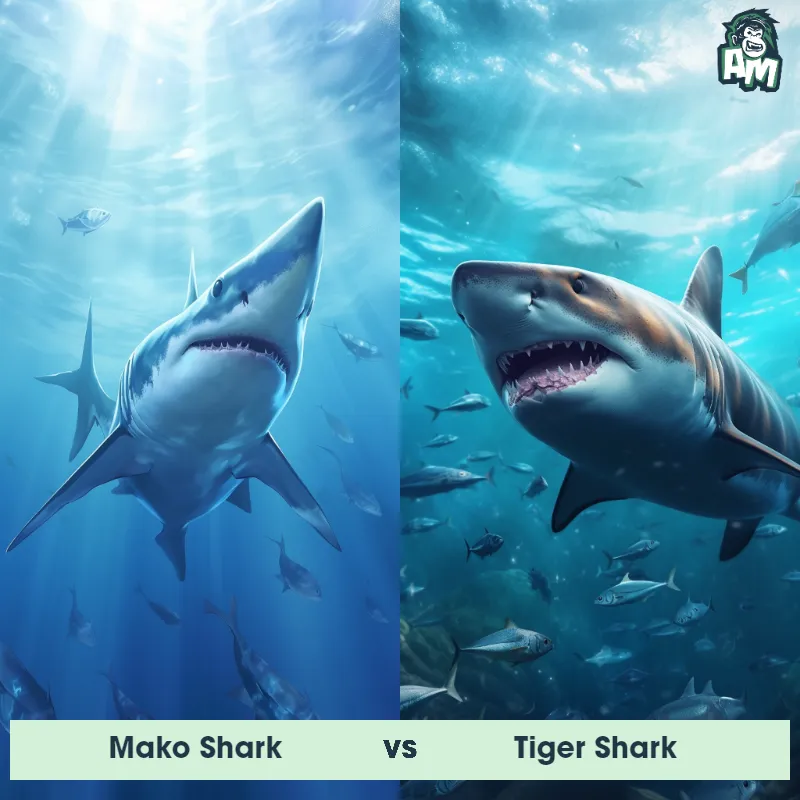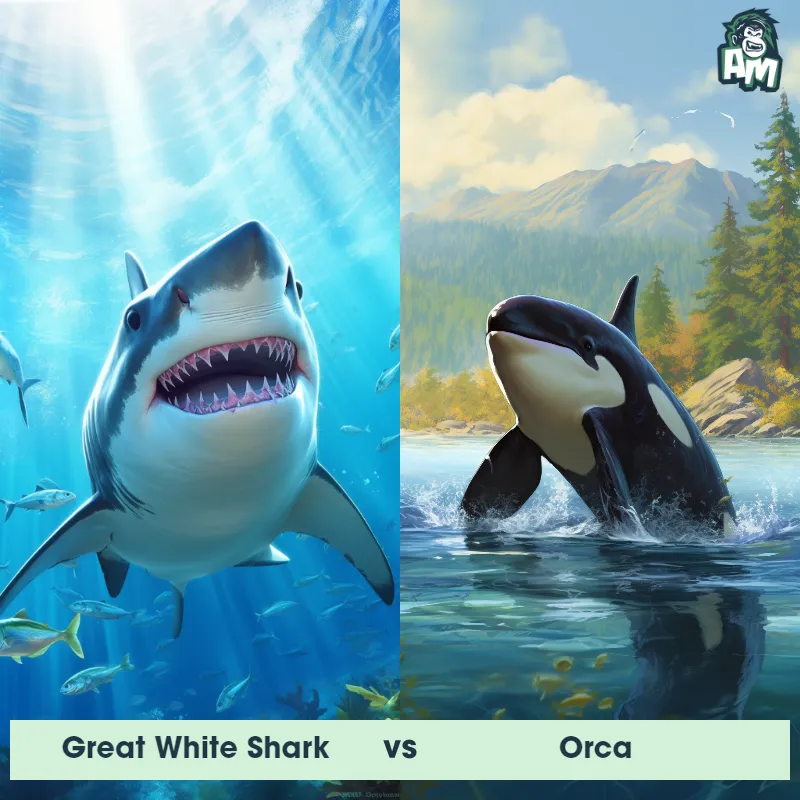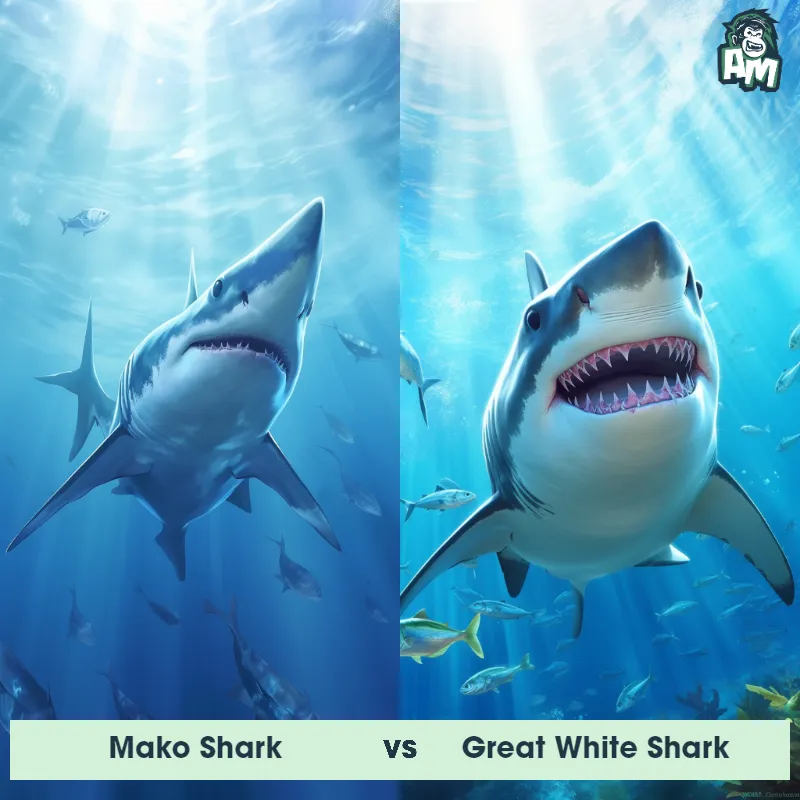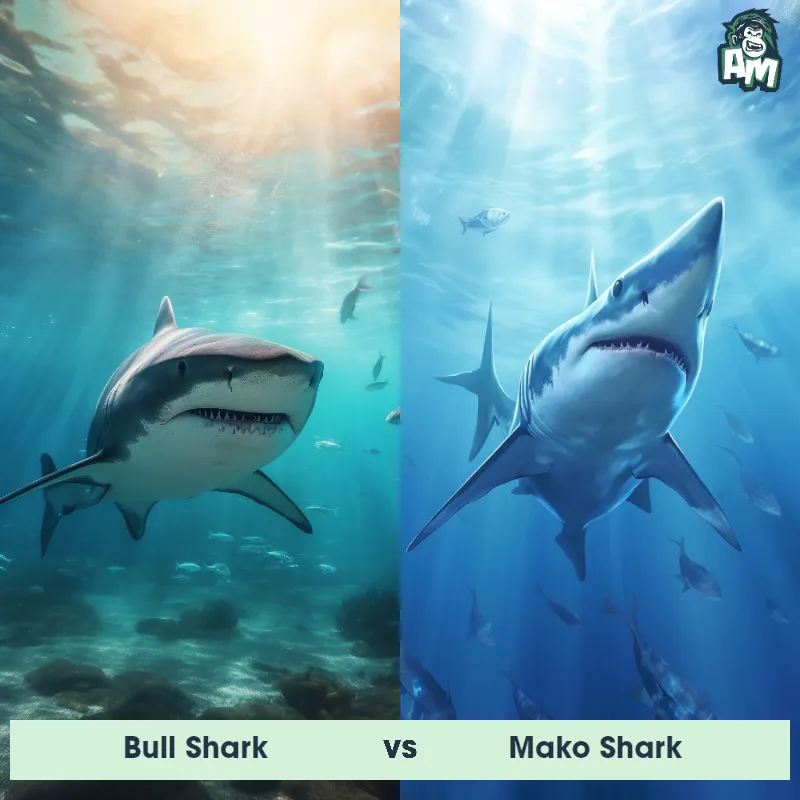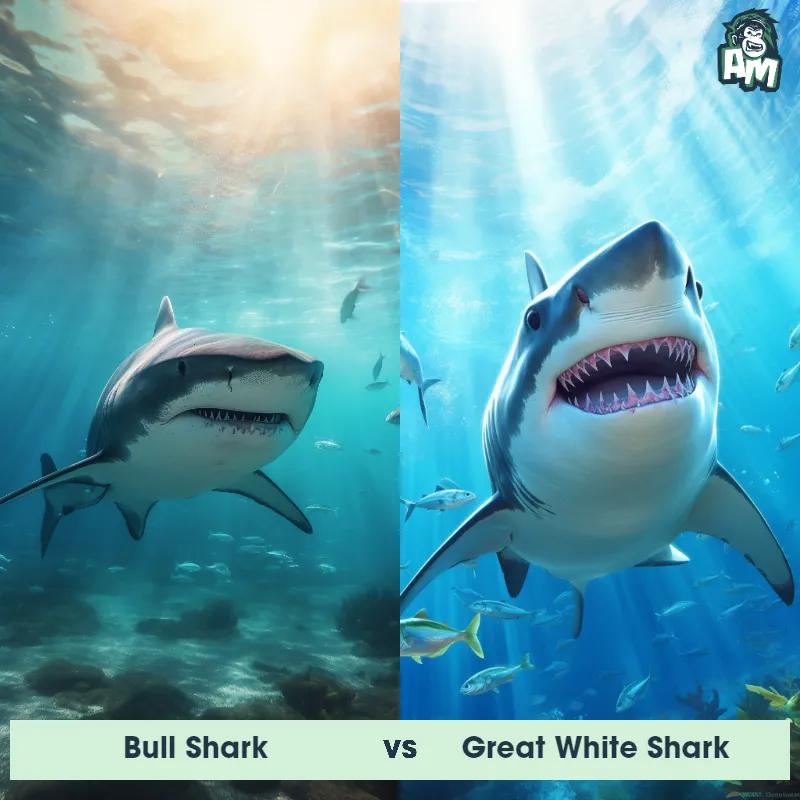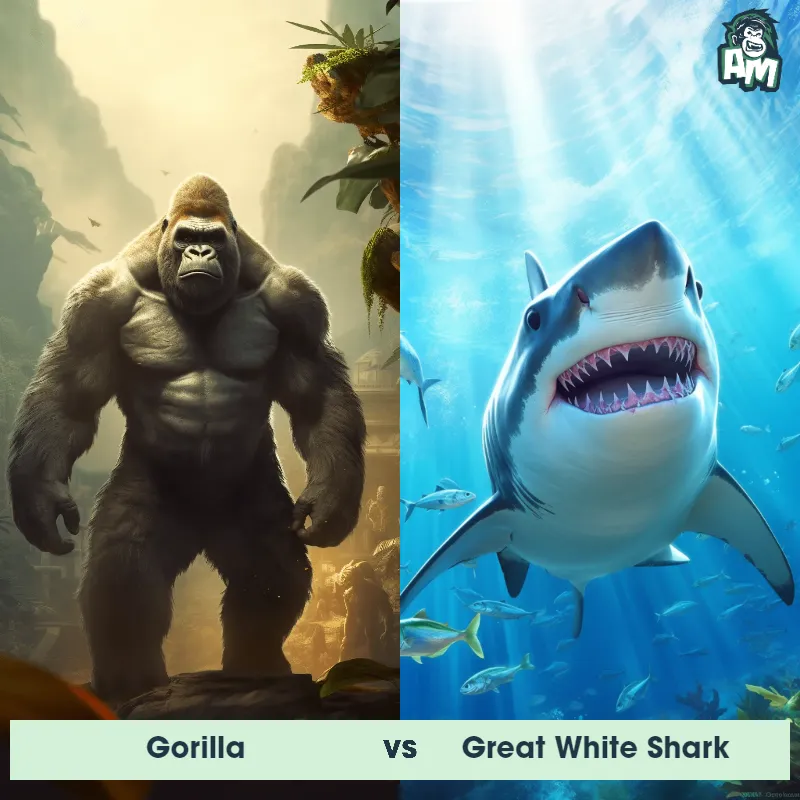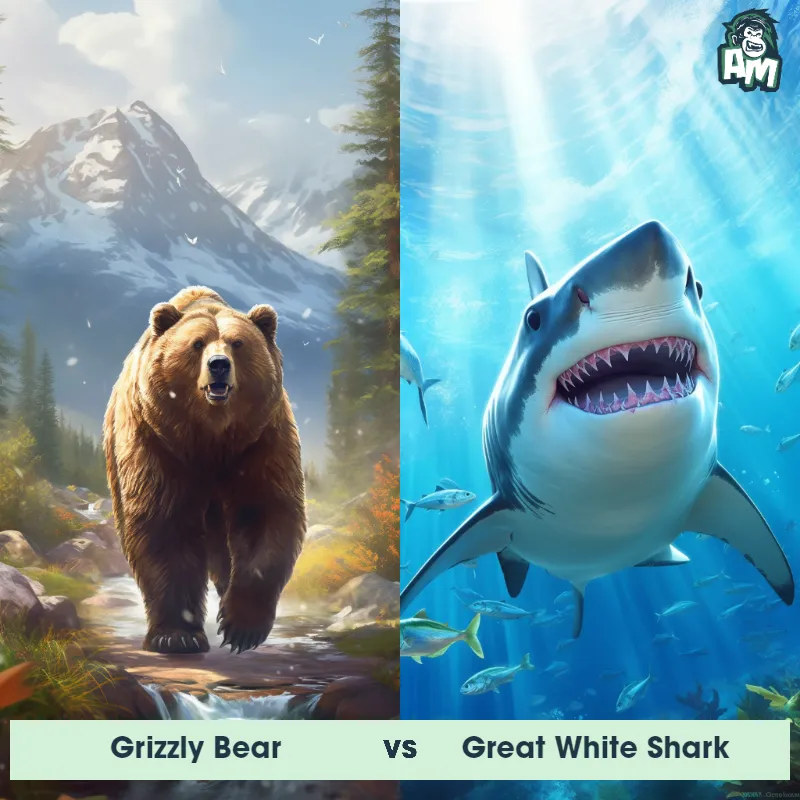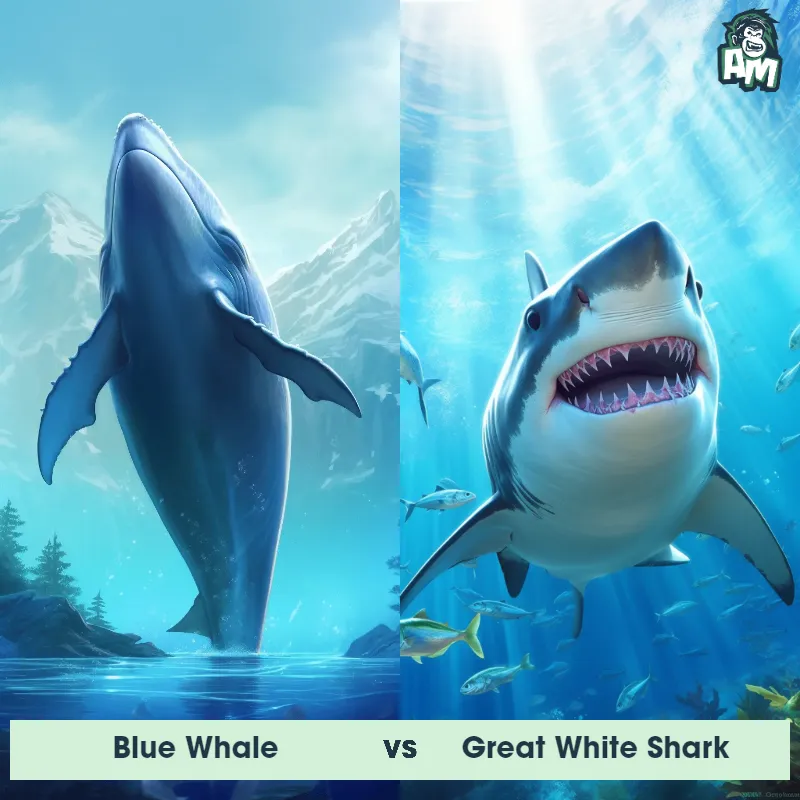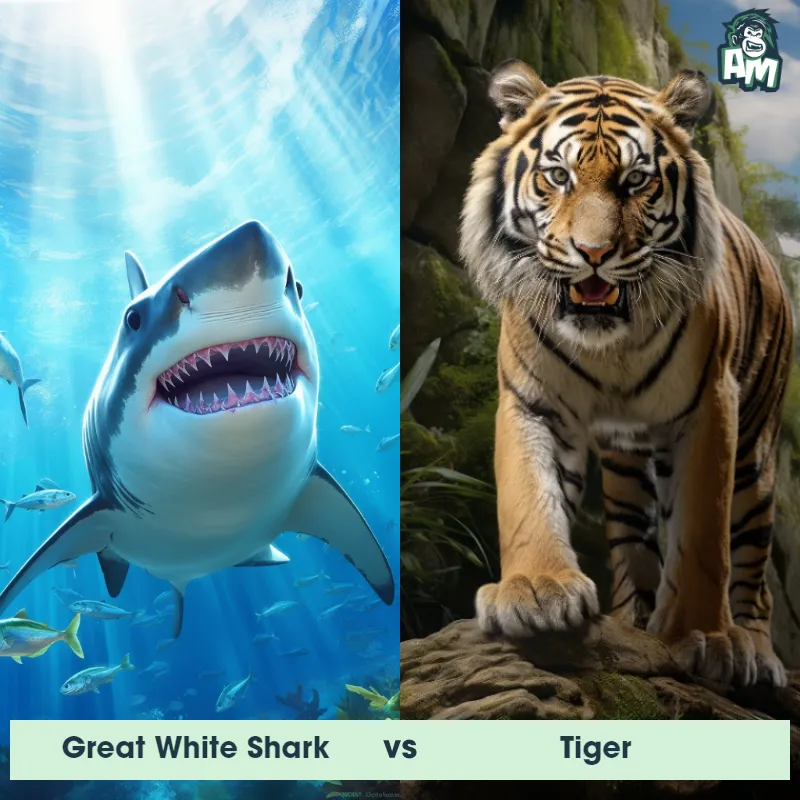Great White Shark vs Blue SharkSee Who Wins
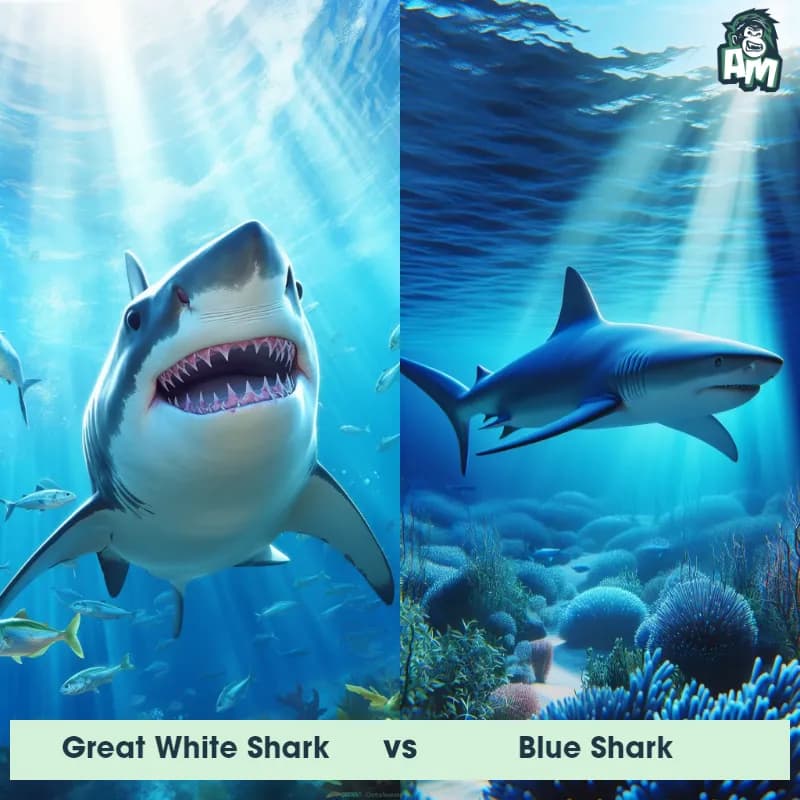
Ladies and gentlemen, welcome to an incredible showdown between two of the ocean's most feared predators! In the blue corner, we have a fierce and agile Blue Shark. And in the white corner, we have a massive and powerful Great White Shark. Get ready for a battle that will leave you on the edge of your seat!
Contender 1: Great White Shark
The Great White Shark, also known as the white pointer or white death, is a large predatory fish that can grow up to 20 feet in length and weigh over 5,000 pounds. They have a distinctive torpedo-shaped body, grayish-brown skin, and rows of sharp teeth that can number up to 300. Great White Sharks are found in coastal waters all over the world and are known for their powerful jaws and ability to breach the surface of the water.
Fun Fact: Great White Sharks have a unique sense of smell that allows them to detect a single drop of blood in 25 gallons of water, which is equivalent to the size of an Olympic swimming pool.
Contender 2: Blue Shark
The Blue Shark, also known as Prionace glauca, is a species of mackerel shark that can be found in various oceans around the world. These sharks are known for their slender yet streamlined bodies, enabling them to swim swiftly through the water. They have long, pointed snouts and large, dark eyes. Their bodies are primarily blue in color, hence the name, and they have a white underbelly. Blue Sharks also possess multiple rows of sharp, triangular teeth used for capturing prey. They are known to be highly migratory, often traversing long distances in search of food.
![[object Object] Gif](https://tenor.com/view/blue-shark-boop-gif-4331805278509584479.gif)
Fun Fact: Blue Sharks are known for their impressive hunting abilities, as they can detect even the faintest electrical signals given off by their prey using specialized pores called ampullae of Lorenzini, which are present on their heads. This remarkable electroreception sense allows them to locate their prey even in dark or murky waters.
Matchup Stats
| Great White Shark | Blue Shark | |
|---|---|---|
| Size | Up to 20 feet (6.1 meters) | Up to 12 feet (3.8 meters) |
| Weight | Over 5,000 pounds (2,268 kilograms) | Up to 400 pounds (180 kilograms) |
| Speed | Speed: 25 mph (40 km/hr) | 25 mph (40 km/h) |
| Key Strength | Powerful jaws and sharp teeth | Strong swimming and agility |
| Biggest Weakness | Vulnerable gills and eyes | Relatively timid and avoids confrontation |
Current Votes
Great White Shark vs Blue Shark
See Who Wins
View More Matches
Looking For More?
Similar Matches
Scientific Stats
| Great White Shark | Blue Shark | |
|---|---|---|
| Scientific Name | Carcharodon carcharias | Prionace glauca |
| Family | Lamnidae | Carcharhinidae |
| Habitat | Coastal waters | Open ocean |
| Geography | Worldwide | Various oceans worldwide |
| Diet | Carnivorous, primarily seals and sea lions | Feeds on fish, squid, and other marine animals |
| Lifespan | 70 years - 100 years | 20 years - 30 years |
Key Differences between Great White Shark and Blue Shark
- Patterns: While both sharks may have unique individual markings, a common distinction is that the Great White Shark often appears in a more solid and uniform coloration, while the Blue Shark exhibits a characteristic pattern of dark tips on its pectoral and caudal fins.
- Coloration: The Great White Shark has a distinct dark gray or brownish upper body, blending into a white belly, whereas the Blue Shark has a sleek, deep blue color on its upper body, transitioning to a lighter shade on the underside.
- Teeth: Great White Sharks have large, triangular and serrated teeth with a distinctive shape, perfect for hunting and cutting through prey. In contrast, Blue Sharks have smaller, smooth-edged teeth that are adapted for grabbing and gripping slippery fish.
- Body shape: The Great White Shark has a robust and cylindrical body with a conical snout, giving it a more stout appearance, while the Blue Shark has a slender, elongated body and a tapering snout.
- Size: The Great White Shark is significantly larger than the Blue Shark, with adults reaching lengths of around 15 to 20 feet, while the Blue Shark averages around 6 to 10 feet in length.
- Dorsal fin: One of the primary differences is in the dorsal fin shape. The Great White Shark has a prominent, tall, and rigid triangular dorsal fin, often visible while swimming near the surface. On the other hand, the Blue Shark possesses a more slender and slightly curved dorsal fin that is less prominent.




